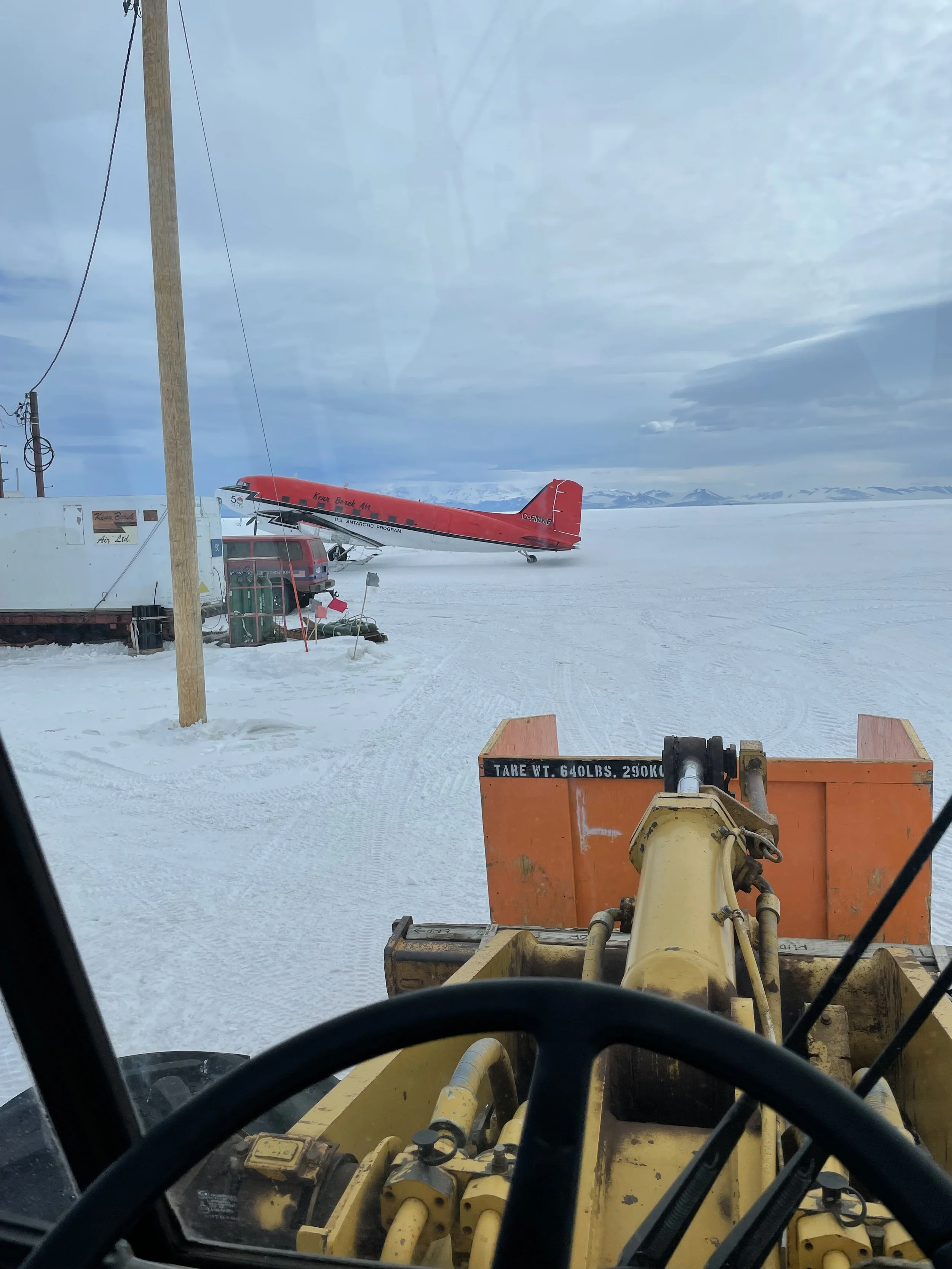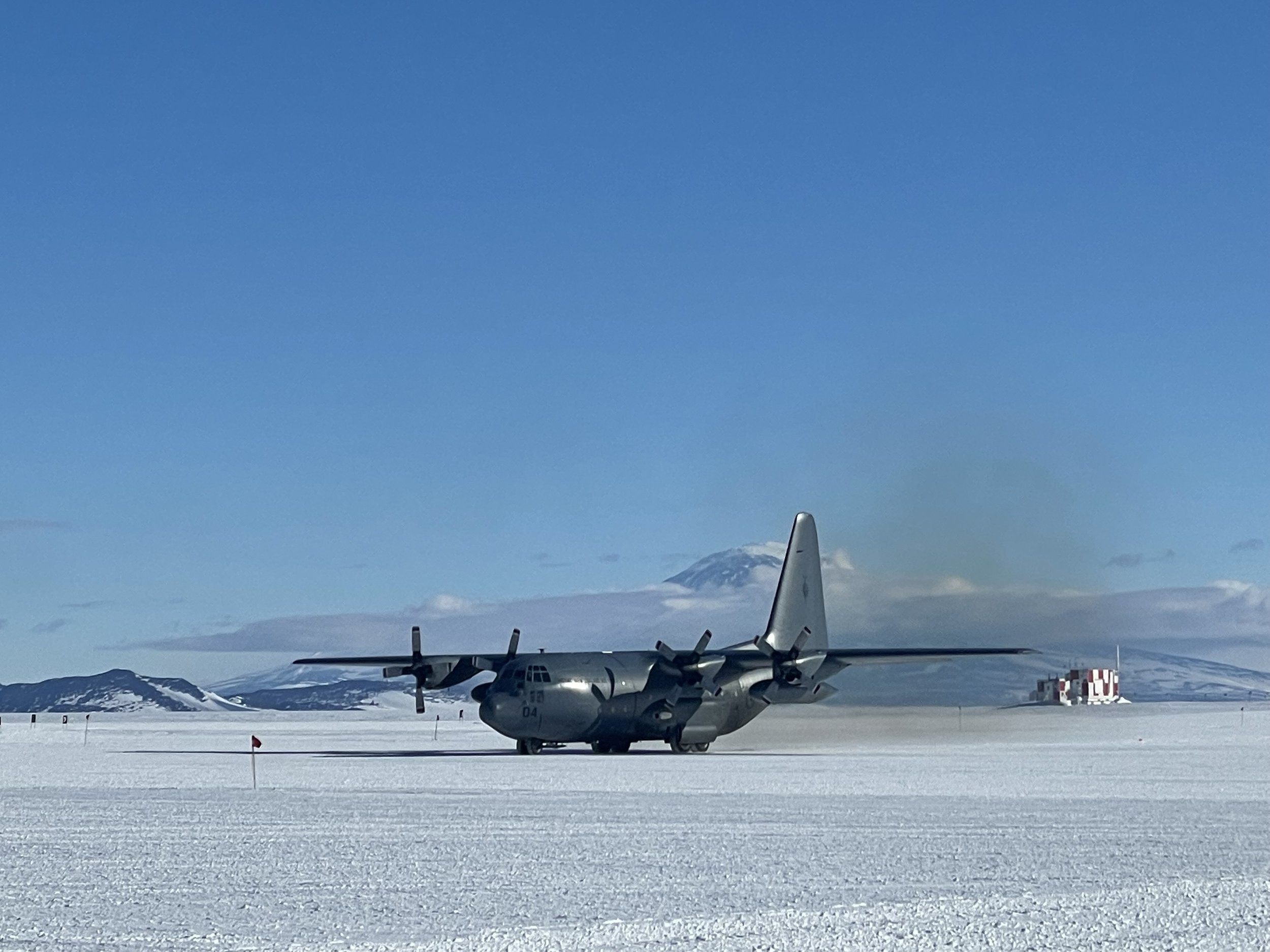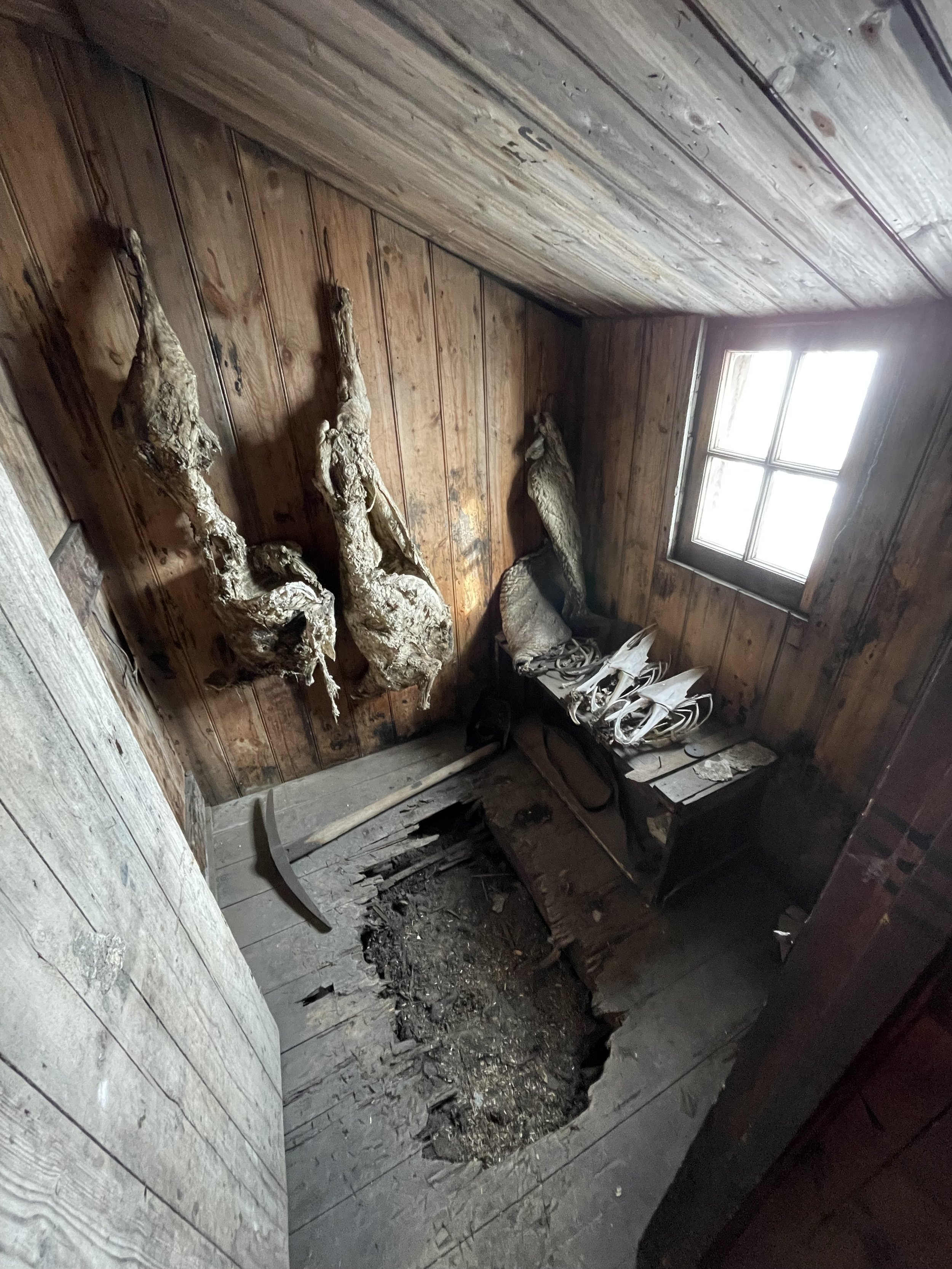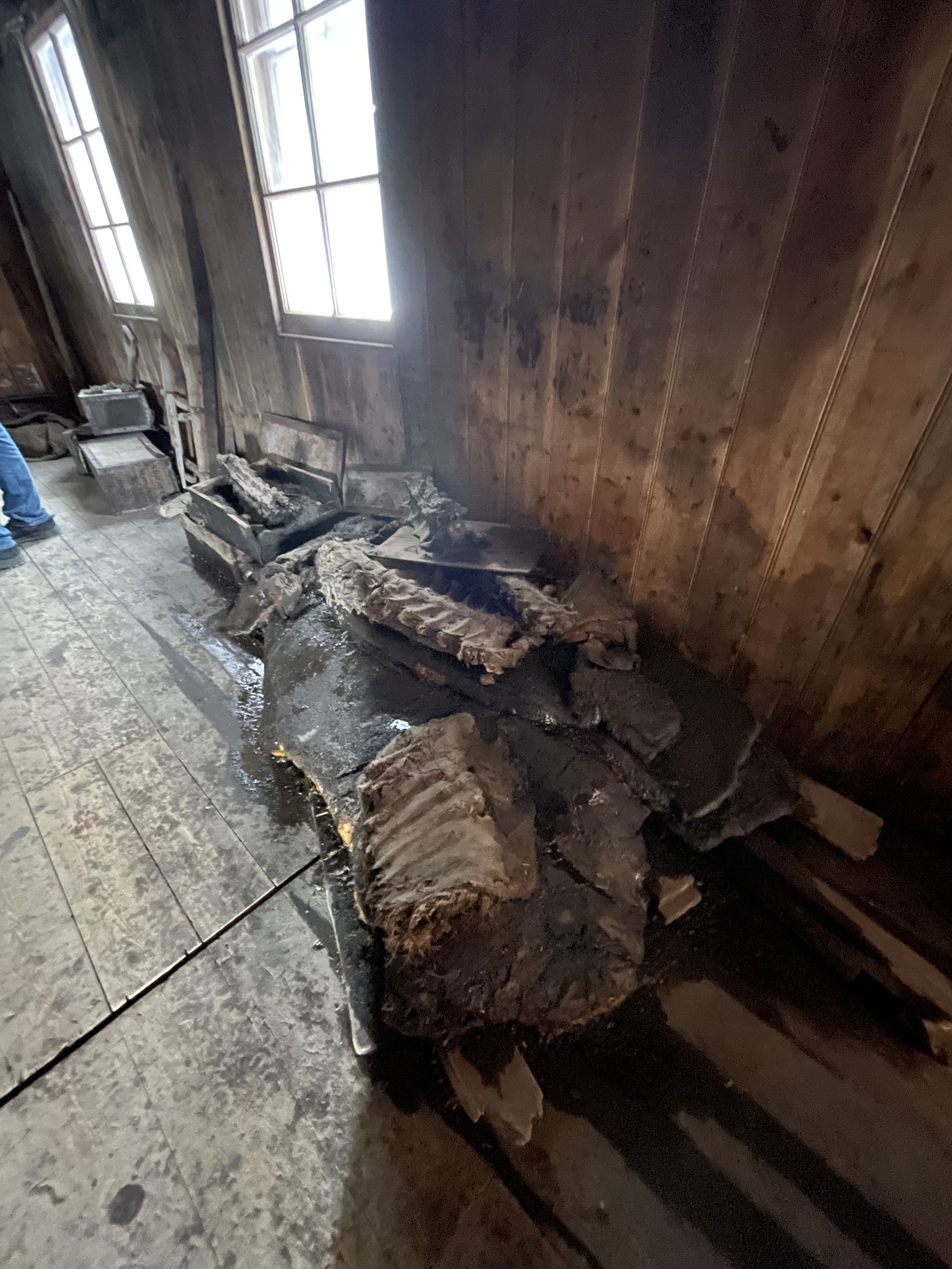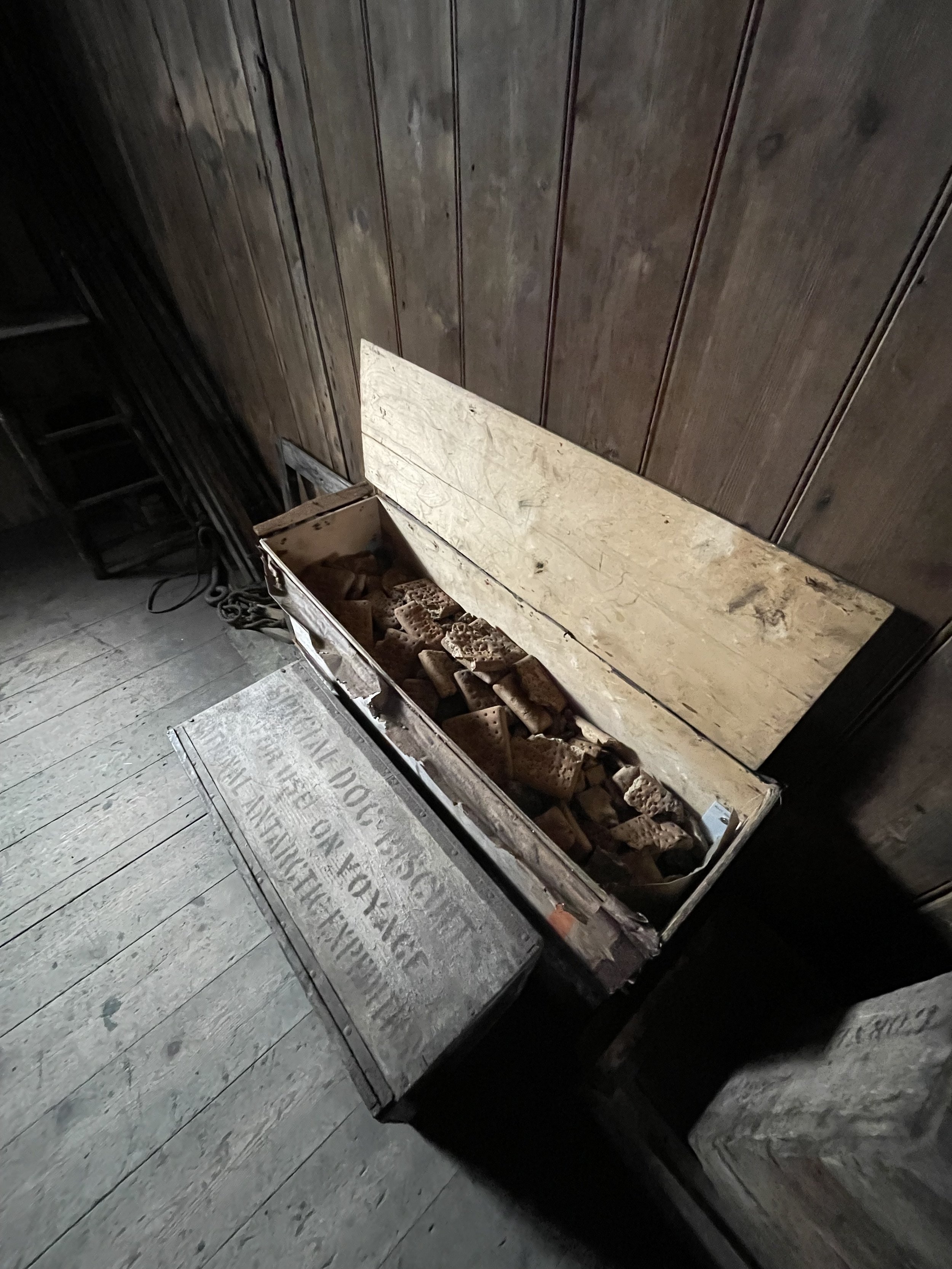Life On The Ice
Week 5
This week I trained to work with the Baslers and Twin Otters. These flights help supply the deep field operations and South Pole station. There are two functional airfields at McMurdo. Another site is no longer operational and is the crash site of the Pegasus, which crashed in 1970 due to an intense storm.
Phoenix airfield is for wheeled aircraft, and Williams field is for skied aircraft. Williams field is named after a vehicle operator named William, who broke through the sea ice and died. A lot of things are named after people who have died around here. Even though it would be a cool way to go out, I am hoping I do not get anything named after me!
This was the first good length of time that we were at Covid level green where we did not need to wear masks indoors and around people. The only bases in Antarctica where you can walk between two bases are McMurdo (USA) and Scott base (NZ), so on Thursday nights, the Scott base hosts American night where people from McMurdo can go visit the base openly and get a drink at the bar and chat with our Kiwi (term used for NZ folk) brothers and sisters.
This day was also great because it was the man-haul race between the two stations. Four people are running and dragging another in a sled. There were multiple teams, and they raced from McMurdo around Observation Hill to Scott base. I could go out into the pressure ridges and photograph the racers coming in while also admiring the stunning ice formations caused by the ridges. These are two different ice plates smashing into each other, and there is nowhere for the ice to go than up, so you get these ice waves towering 10-20 feet above you.
We decided to do Castle Rock, the longest hike at McMurdo, for our day off. It is about 8 miles in total. Sundays are the one day that most people get off on station, so it is common to meet up and make plans. I met up with Mike, Gary, and Dan. We decided to meet at the computer lab and head out to the trail start around 12:30. We managed to get a ride from one of the shuttles to the trailhead. The wind was howling, and it was very cold outside. Mike was sitting shotgun and turned around and said, “Are we actually going to do this? Are we this stupid?” After a good chuckle, we set out to Castle Rock. The first bit of the hike is on a glacier, and due to the increasing temperature fluctuations, it made the surface very slick. Poor Gary slipped, fell on his ass, and later found out that he damaged his camera.
About a mile or so into the hike, you come up to the first safety shelter, nicknamed Apple 1 due to its red domed shape. The weather is not that cold outside at 15, but it is the wind that kills in the cold climates. So, getting into the shelter to warm our hands for a bit was much appreciated. After a quick break, we set out for the second Apple.
A cool thing while you are doing this hike is that you are on a ridge, and to the right, you can see all the airfields and out onto the Ross ice shelf. Looking to the left, you get to see the Royal Societies, while up ahead is Mt. Erebus and Castle Rock.
We made it to the Apple 2, and Gary went in but managed to close the door on his ski pole, breaking it. Gary was not having a good day.
We get to the base of Castle Rock and finally get a break from the wind while moving around the rock. We scaled about halfway up the rock and just sat there in wonder, awestruck by this amazing harsh landscape.
When you get behind Castle Rock and are facing away from the station, Mt. Erebus is not blocked by anything, so you can see the volcano. There were a couple of little hills on the ridge, and Dan stepped out onto them and snapped some epic photos of himself in front of the volcano.
After relaxing out there and having a good conversation, the wind started to die down, and the weather became far nicer than it was earlier. We started to head back as we had a deadline time to make it back, so the FSTOP rescue team would not get called to get us. There was a little slope, and we all slid down it to hit the trail back to McMurdo, and Gary, unfortunately, ripped his Gortex jacket. Now he really was not having a good day. On our way back, we did the Erebus lookout ridge and looked for the Erebus crystal. These unique crystals only exist here and in Kenya, Africa. We made it back just before dinner and enjoyed all the comfort food after such a long cold day.
Week 6
This week I got to work my first C-130 and unloaded and loaded pallets. The winds this time of year brought the snow and gave it this flowing look across the ice sheet that just transfixed your eyes because it was so eerie but calming.
This was the last week that the Observation tube would be out, so I went one last time with my coworker, Josh. The drop-off is pretty much directly from the shore. One of my favorite things about being under the ice is being able to see the ice sheets and visualize why Antarctica is the highest continent.
As the weather was getting nice, the Sea Ice hike would soon be closed, so I went with Brandy, MK, and Cody and hiked off from McMurdo and then went around Observation Hill. This was the farthest out I have walked on the ice, and it was just a surreal experience to be this far away from the station, standing on sea ice.
What is also cool is that you can tell when you step onto the Ross ice shelf versus the sea ice. The shelf has a higher elevation and there is a slight incline when you cross the border. The hike brings you past Scott base, then you walk to the main road for the airfields and then the main road back to base. Overall, this was an 11-mile hike. Cody and I then decided that since there was still time in the afternoon, to play pickle ball with our roommates.
Week 7
That Monday, I did a group hike out to Evans point. Instead of going to the left for a normal hike, we headed right and got to see a completely different landscape. It was overcast, but the sun had a nice ice ring encircling it. When we got to the pressure ridge, the group stopped, and we were silent for a couple of minutes and listened to nothing. It is baffling how silent this entire continent is.
It just happened to work out that on my day off midweek, we hit our first official Con 2 of the season. This is when the visibility and wind speeds increase to hazardous conditions. So, what a perfect time to go on a hike! I got into my ECW Gear and headed out to Hut point to experience the raw natural power of this place. At this point, I had made a reputation for myself that whenever the weather was shitty, I would most likely be the one to be hiking. I loved the blowing snow and being out in the extremes and nothing is more extreme than the frozen continent. I walked to the Point and felt the full force of the 40mph winds and single-digit temperatures. I could not see McMurdo, just the Point, which was thrilling. I sat down on the elevated area that is Hut point, faced the wind, and felt the snow falling and crackling on my jacket while the howling cold wind blew past my ears.
It felt like an icy finger touching my bones wherever it could get through my ECW gear. This moment in my life is honestly the most alive I have ever felt. After about 40-minutes, I started to get very cold and was losing feeling in my hands and feet, so I headed back to base with a huge smile on my face.
This week they also offered a tour of the famous landmark, Discovery Hut, which is the hut that was built by the early Antarctic explorers Robert Falcon Scott, Ernest Shackleton, and Edward Wilson in 1901 as part of the Discovery expedition. This expedition was to see how far south they could go, and they used the hut as their base of operation. The Terra Nova expedition was his second attempt in 1910-1913, and he was beaten out by five weeks by Amundsen’s expedition in 1912. Falcon Scott discovered the Antarctic plateau, which is where the South Pole sits. This area became his final resting place. What I love about this continent is that it was only discovered 202 years ago. That was the first time the Russian explorers Fabian Bellingshausen and Mikhail Lazarev set a site on the true continent. It was believed that the first sighting of the ice islands was by Captain James Cook, but recent studies of Maori culture show that these amazing sea voyagers had been in the area long before James Cook came through. Our group met up to head to the Discovery hut, and we could see mummified seals outside.
Due to its historical significance, everything is preserved and left alone with only some minor maintenance to preserve the hut. I stepped in and was greeted by seal and penguin carcasses, all also mummified due to the extreme cold weather that does not allow decomposition to occur. The hut's center has shelves where food from 1900 was stored, and even the biscuits were still there. Seeing how these early explorers dealt with this extreme environment and taking this step into the past gives you a great appreciation for today's technology that allows humans to survive in such climates. One of the hut's biggest downfalls was based on an Australian outback-style house. This is a hut designed to keep cold air inside, not heat, so I have no idea why they thought that was a good idea when they constructed it.
Since the Thursday that just passed was Thanksgiving, we celebrated that weekend and got two days off, which was an awesome refresher. I mostly just relaxed, and then we had our big Thanksgiving dinner with everyone in our friend groups.
Week 8
This was going to be an exciting week because I met with the dive team, whom all have similar interests to me in conservation and science. We speak the same language! I joined one of their dives as an attendant as I, unfortunately, do not have the certifications to dive under the ice. I am only missing my dry suit certification with ten dives needed although I have all the other qualifications. But I have a feeling, that someday in the future, I will be diving under the ice. The dive team and I jumped into the piston bullies (treaded vehicles), drove out to the dive shack, and unloaded all the gear. The dive shack shelters a hole in the ice that does not freeze. The good thing was that the weather was warm, about 30 degrees.
There are two types of divers here in McMurdo. The scientific divers collecting data are associated with a research institute or university, and then there are the support divers. Rob and Steve are some of the most famous cold-water divers on the planet, with a combined 4,000 dives. Getting to hear their stories about the ice and commercial diving back in the days always made sitting with them worth it at mealtime. The dive members suited up and made the plunge into the icy abyss. Antarctica has the coldest water on the planet at 28F/-2C. My goal and the other attendee’s goal was to ensure that everything on the surface was good and assist the divers coming out of the water. The project that Dr. Amy Moran was working on is the sea spiders (crustaceans, not actual spiders) that live here. They are the largest species in the world, while those found in other parts of the world are usually no bigger than your fingernail. Cold water has more oxygen in it which is better for invertebrates. The nudibranchs here are also quite large compared to others around the globe.
After the dive, Arron, one of the scientific divers, and I went to the lab to put the collected sea spiders in the tanks they use to study them, and I got to check out all the other animals in there and learn more about the research that is taking place. The scientists do not know how long these animals live or how old they are, but they are studying all the life stages of these sea spiders.
Later that week, we said goodbye to the last “Poleys” who came from the South Pole who were still wintering out there due to all the aircraft cancellations. At the end of the week, the LC-130 Air Guard unit came for the first time, and I got to see these historic, epic aircraft. There are only ten in existence, and three of them were here.
Warm weather makes the ice roads have really shitty conditions, so this week we also started road packing, and we used the Delta transport units, a type of military passenger vehicle. Road packing is essential with the vehicle crisscrossing your last tracks with one new tire to make the road stiffer, so smaller vehicles do not slide all over the place.
That Friday was fun because I got invited by my mechanic friend to check out the makeshift bowling alley they built. We had some good fun doing that, and then I got a tour of all the cool machines in the shop.
This week was also special because we saw a solar eclipse that would only be visible in Antarctica. It was a truly big event for the scientists down here because it would be a total eclipse at the South Pole. The unique thing about this event is that it would be dark in both hemispheres at the North and South Poles, while allowing our telescopes to reach farther into space and collect more data. This event happens roughly every thirty-three years.
